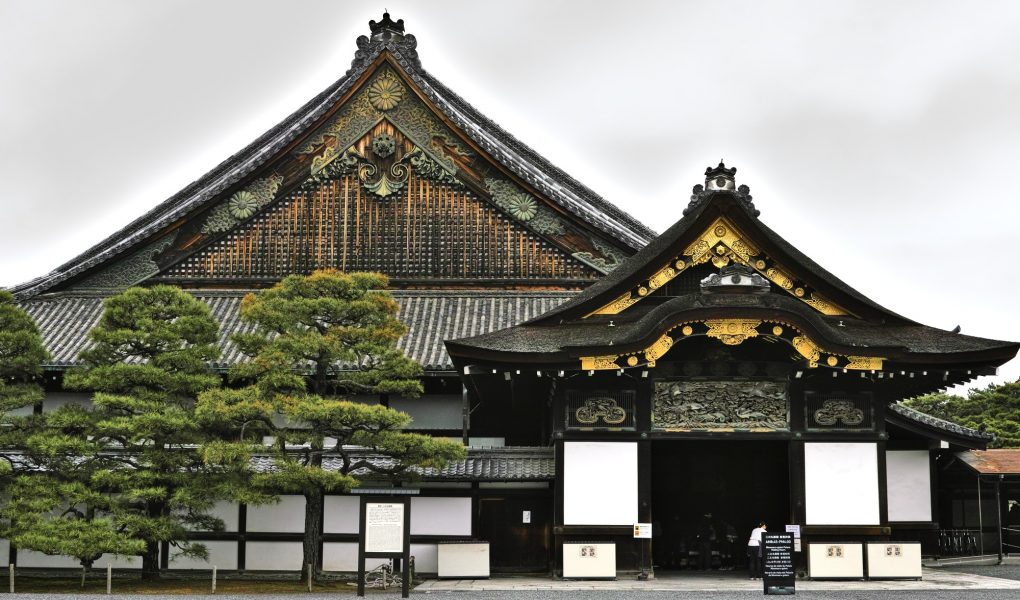Nijo Castle, Japan
1. Nijo Castle has the renowned nightingale floors
Located in Nijo Castle, the nightingale floors are famous for their singing quality. How is this even possible? Well, as you walk just normally through the gorgeously decorated corridors, regardless of how you step, whether lightly or otherwise, believe it or not, a sort of chirping sound will result and reveal where precisely you are in the castle! You can't escape detection here!
In fact, these floors were designed specifically to create chirping sounds as anyone walked on them. The floorboards' nails would pass through and rub against a clamp or metal jacket and create chirping noises. Seems like someone wanted every guest's whereabouts fully known for practical security-related reasons.
2. Nijo Castle was home to the powerful Tokugawa Leyasy
Built in 1603, Nijo Castle required the most serious security measure possible in order to protect Tokugawa Leyasu, who was the first shogun belonging to the Edo Period, as well as to serve in Kyoto as the Tokugawa shogunate's heart of power.
3. The Castle's Karamon gate at its entrance symbolized authority
The actual grandiose Karamon gate which led to Nijo Castle represented not only great authority but also proclaimed the reputation of the structures situated behind the gate. Fascinatingly, Karamon entrance was very exclusive, reserved just for receiving the shogun when he visited the castle, like having your own private entrance.
4. Ninomaru Palace hidden inside would both awe and intimidate guests
Once crossing the gate, almost immediately you'll see Ninomau Palace. Its sole role was meant to impress everyone entering and even filling them with varying feelings of intimidation.
Firstly, Ninomaru Palace comprises 5 linked structures that were built with superb Hinoki cypress. Every building was elaborately adorned with wood carvings, gold leaf, and lovely paintings procured by the artists belonging to the Kano School.
Needless to mention, this lavish decor fulfilled the purpose to drive a strong impression into all visitors as well as to re-verify the shoguns' unwavering power.
5. The self-guided walk via Ninomaru Palace reveals several clues that relate to the shoguns' lives
As the self-guided tour began, taking you through many rooms that shoguns used in the Ninomaru Palace, it told how they operated and ruled.
The tour begins by visiting Tozamurai-no-ma, which is a waiting room for daimyo who came to the castle. You'll admire the images of leopards and tigers gracing the walls. But such depictions were surely meant to strike fear into the hearts of guests there.
Then, you'll go through Chokushi-no-ma Room and here, shogun receives the Emperor's messengers coming directly from the court. These envoys sat on the higher row while the shogun himself sat on the lower level; this seating arrangement served to guarantee that the shogun would demonstrate respect and confirm the emperor's superiority.
Perhaps the most stunning is Ohiroma Ichi-no-ma, or Great Hall. It's 48 tatami mats broad and it was where the shogun and daimyo would meet.
6. Historical proclamation of shogunate's end occurred at Nijo Castle
The official announcement that told about the termination of the Tokugawa rule happened at Nijo Castle. More specifically, it occurred at Ninomaru Palace in the Great Hall in October 1867. In addition, this date marked the restoration of imperial reign.
7. Nijo Zaiban Samurai guarded Nijo Castle day and night
Samurai guarded the castle day and night during peaceful times. Shogunate dispatched the Nijo Zaiban samurai. In fact, two groups consisting of 50 guards each were stationed permanently at this castle. Ban-sho, Guardhouse, was used as a barrack.
Most Famous Must-See Tourist Attractions in Japan
